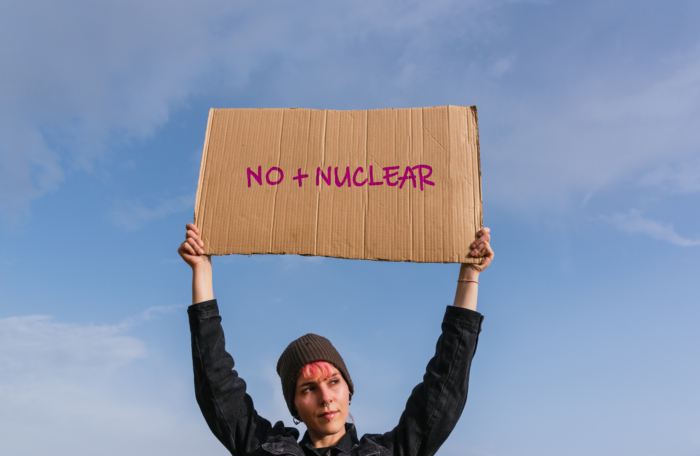Nuclear power is having a moment despite, not because of, environmental activists
Energy shortages in California and Europe have prompted a revival of interest in Nuclear power. And who gets the credit? Environmental activists, naturally.
“Why even environmental activists are supporting nuclear power today,” National Public Radio gushed last week.
The few environmentalists highlighted in the story deserve credit for taking such an unpopular position within the movement. NPR even acknowledges their pariah status.
“We felt like we were on an island all by ourselves,” Mothers for Nuclear activist Kristin Zaitz said. “We had people wishing that we would die, wishing we would get cancer…making weird videos about us that made me feel like, am I unsafe, is my family unsafe?”
This aired on NPR, which is progress. Also progress: NPR accurately reported nuclear power’s superior record on safety and pollution:
“In terms of deaths from accidents or pollution, nuclear is far safer than coal or natural gas – the largest sources of electricity in the U.S.
“Diablo Canyon got a boost last year when researchers from MIT and Stanford said keeping the plant open until 2035 would cut carbon emissions from California’s power sector by more than 10% and save $2.6 billion in electricity costs.”
This is welcome, yet these assessments of nuclear power’s safety and environmental record aren’t exactly news.
You might not know that, though, if you listened to most environmental activists, who’ve spent decades wrongly portraying nuclear power as more dangerous and worse for the environment than other options.
Environmental activists were the ones who pushed for Germany to close its perfectly good nuclear power plants, making the country more reliant on Russian oil and gas.
They pushed for California to close the Diablo Canyon nuclear power plant, without which California probably would be suffering blackouts right now.
They pushed for the closure of Vermont Yankee, which resulted in increased carbon emissions in New England.
And they worked tirelessly to close Maine Yankee, Connecticut Yankee, Yankee Rowe, Indian Point and other nuclear power plants in the Northeast and throughout the United States.
To the delight of environmental activists, the Northeast has lost more than a handful of nuclear plants in recent years, mostly because it became uneconomical to continue running them (something environmentalists tried hard to ensure).
- From 1972-1996, the Maine Yankee nuclear power plant was the largest power generator in the state. But environmental activists opposed it from the start an harassed it with an ongoing series of ballot initiative and bills to shut it down. It closed for cost reasons.
- From 1972-2014, the Vermont Yankee nuclear power plant generated power in Vernon, Vt. Environmentalists worked the entire time to get it closed, and they succeeded even though the plant had been operating safely and had just had its license renewed through 2032. The plant’s closure resulted in an increase in New England carbon emissions as nuclear power was replaced with natural gas.
- From 1960-1992, the Yankee Rowe plant operated in Rowe, Mass. It was protested by environmental activists. Its owners shut it down rather than pay for federally mandated testing that was demanded by activists.
- From 1972-2019, the Pilgrim nuclear power plant operated in Plymouth, Mass. Activists pressed for its closure all along, and the plant owner ultimately shut it down for economic reasons in 2019. Its power generation was replaced by natural gas. Afterwards, predictably, New England carbon emissions increased.
- From 1968-1996, the Connecticut Yankee nuclear power plant provided low-carbon power to Connecticut. Environmentalist sought its closure. This plant was cited for safety violations, though the Nuclear Energy Institute says the site of the decommissioned plant is safe enough to turn into farmland. It was closed for cost reasons.
- From 1962-2021, the Indian Point nuclear power plant generated power in Buchanan, N.Y. Environmental activists challenged the plant’s continued operation, and the State of New York threw up numerous legal obstacles to the plant’s license renewal, making renewal too costly for the owner to pursue. New York carbon emissions increased after Indian Point’s closure, of course.
- And then there’s New Hampshire’s Seabrook Station, which was supposed to open in 1974. Environmental activists successfully delayed its opening until 1990. Since it was first proposed in the 1970s, it has been protested continuously by anti-nuclear activists, who still want to shut it down. They successfully prevented the plant’s second reactor from being built. By delaying and shrinking the plant, activists managed to increase New England carbon emissions and prolong the use of oil and coal in New Hampshire.
State subsidies for renewables, which artificially suppress wholesale energy market prices, coupled inexpensive natural gas helped make nuclear power plants less economically viable.
Environmental activists gleefully contributed to nuclear power’s negative economic and regulatory environment by misleading the public and elected officials about nuclear power’s safety and environmental record, pushing to tilt the playing field in favor of renewables, and harassing plant owners with lawsuits and protests.
It’s nice to see the small group of pro-nuclear environmental activists get credit for being right when the rest of the green movement has been shamefully, dangerously wrong about nuclear power from the start.
But that’s only a small part of the story. The bigger story is how the environmental movement put itself on the wrong end of one of the biggest fights of its existence and wound up hurting the environment as a result.
And all the while, they sought to delegitimize the activists, policy wonks, industry experts, academics and researchers who told the truth. That’s the story that needs to be told.



